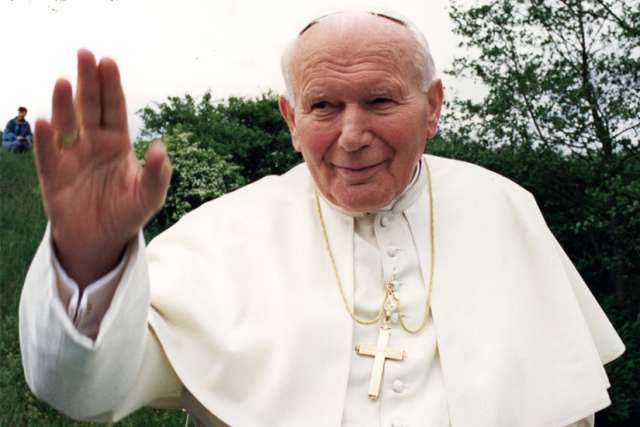In the spring of 1994, John Paul had broken his leg and a slow recovery meant that he had to cancel his planned visit to the United Nations in New York that fall. It was not an idle year, though. In the summer John Paul led a successful campaign against the attempt by the Clinton administration to establish abortion as a universal human right at the UN Cairo conference. In the fall, the first book-length papal interview, Crossing the Threshold of Hope, became a global bestseller, bringing John Paul’s Christian humanism and courage preaching of the Gospel to a wide audience.
Yet a question remained. Would physical infirmity mean an end to John Paul’s missionary journeys which, together with his predecessor Blessed Paul VI, he had made a hallmark of the modern papacy? John Paul published in November 1994 his plan for the Church’s preparation and celebration of the Great Jubilee of 2000, Tertio Millennio Adveniente. Would he be able to lead the Church to that millennial appointment himself?
Hence the long-distance pilgrimage of January 1995 was a critical test. Some thought John Paul foolish for setting out on such an ambitious apostolic journey — to the Philippines for World Youth Day; to Australia for the beatification of Mother Mary MacKillop, their first native blessed; to Papua New Guinea for their first beatification, Peter To Rot; and finally to Sri Lanka for the beatification of Fr. Joseph Vaz, a missionary from Goa, India, known as the Apostle of Sri Lanka.
It turned out to be a smashing triumph, the highlight of which was the WYD Mass in Manila, which was reported to have attracted the largest crowd in human history. It cemented WYD in the life of the Church, confirming the remarkable success in secular Denver in 1993. And it established a principle that would be lived to the full over the next 10 years until his death in 2005: John Paul would not permit any physical disability to impede his service as chief shepherd of the flock.
More significant for me, my priestly vocation was confirmed at WYD 1995 and the months following, the theme of which was providential: As the Father has sent me, so I send you.
It was also my favourite John Paul moment. It was the second time I had attended a papal event, and at WYD 1995 I was witness to why John Paul had such a charismatic impact on young people, myself included.
There were a million high-spirited young people, chanting and singing at the traditional prayer vigil on Saturday night. At one point the vigil was interrupted by one of those spontaneous exchanges that characterized John Paul’s special relationship with youth. The crowd began chanting the diminutive, affectionate form of the Holy Father’s baptismal name, Karol: “Lolek, Lolek.”
There was likely some nervousness among the Filipino hosts and the papal entourage, for Vatican protocol does not envision the Supreme Pontiff being addressed by his boyhood nickname. John Paul listened and took matters into his own hands.
He rose, took the microphone and chided the young people, “Lolek is not serious.” The chant stopped dead, the vast crowd fearing that it had offended the Pope, an assumption he let linger with a pregnant pause. Then he smiled and said, “But John Paul II is too serious.” A vast sigh of relief, exhaled in unison, went up from the young people.
“Lolek was a small boy,” explained the Holy Father. “John Paul II is an old man. We need something in the middle. Yes, there was something in the middle. In the middle there was Karol.”
John Paul laughed. Another pause followed, then the crowd thundered back a new chant: “Karol! Karol!”
The Manila moment is my favourite because it expresses that World Youth Day is a conversation which takes place on many levels. John Paul did not come only to talk and the young people did not come only to listen. The Lolek- Karol moment in Manila was not the most important part of the epic January 1995 papal journey, but it was a clear sign that John Paul was back in form, and ready for the push on toward the millennium.
So remarkable was the 1995 visit that the bishops of the Philippines asked for another papal visit to mark the 20th anniversary. Pope Francis accepted that invitation, and in visiting there and Sri Lanka, will complete an abbreviated echo of that visit, an homage to a critical moment in life of the Church in our time.
(Fr. de Souza is the editor-in-chief of Convivium, a Canadian magazine of faith in our common life: www.conviviummagazine.ca.)

